Review for Raise the Titanic
Introduction
The question does arise, just how do you market Raise the Titanic again, even if it is making its UK Blu-ray debut? After all, Raise the Titanic has gone down (pun intended) in history as one of the biggest movie flops, a box office failure that famously elicited Lew Grade to state that it ‘would have been cheaper to lower the Atlantic’. Not only was Raise the Titanic a financial failure, it was a critical failure as well. Not for it the rediscovery and subsequent success of flops like It’s a Wonderful Life, Blade Runner or The Shawshank Redemption. No, most people who saw it felt that it was better off left at the bottom of the ocean, and it might have been no little cause for trepidation when James Cameron first thought of his Titanic opus. The secret of course is to not sell the movie at all. This disc showcases the work of film composer John Barry, and indeed is released on the same day as The Tamarind Seed and The Legend of the Lone Ranger, and all three titles proudly have ‘Features a music suite of the original score by John Barry’ at the bottom of the sleeve art.
Then again, I’m the odd one out. I loved Raise the Titanic when I first saw it as a boy. You don’t have to sell this movie to me. I was always a sucker for a cool concept in a movie, even back then, and the idea of raising a ship lost for 68 years to the surface of the ocean just seemed cool. I was also a sucker for movies of Cold War brinkmanship, East versus West, secret agents and spies, and had already had my first taste of John Barry through the Bond movies. Throw in a hi-tech maguffin that could alter the balance of power and I was happy as Larry. When I first saw Raise the Titanic, Firefox was still a couple of years away, and it would take maybe another ten years before I’d see The Hunt For Red October. Perhaps I just didn’t know any better.
Dr Gene Seagram is the scientist who’s come up with the hi-tech maguffin that impels this story. He’s developed a laser shield that will protect the continental United States from ICBM attack, and render nuclear war an impossibility (where have I heard that idea before?) The only problem is that it needs an exotic power source, something far more potent than uranium. It needs the mineral byzanium to work. The bad news is that it exists only on a small island in Russian territory. The good news is that it’s already been mined, by Americans... back in 1912. Even then it was a substance to be fought over, and only through supreme effort was it smuggled through the UK to Southampton, where it was loaded on an ocean liner heading for New York. Long story short, Seagram’s miracle fuel lies at the bottom of the Atlantic, and now the Soviets have figured out the US Missile Shield plan, it’s become a race against time. Only one man can get there first and do the impossible. Only Dirk Pitt can raise the Titanic!
Picture
Raise the Titanic gets a 2.35:1 widescreen 1080p presentation, and it looks like all they did was transfer the original film onto disc with as little intervention as possible. Normally that would be my ideal Blu-ray, but Raise the Titanic is never a great looking film, shot with a dismal, wintery palette that tends to the grey rather than any significant colour. The source material can be a little soft at times, and grain is always prevalent. The print isn’t always stable either. Contrast levels aren’t great, which means that darker scenes can be indistinct, and blacks are invariably crushed of detail. Certainly the underwater effects scenes are lost in murk. That said, when the setting is above water, and during daylight hours, the detail levels are very good, and there’s certainly more to be gleaned from this version of the film than any previous release.
Sound
You have the choice of DTS-HD MA 5.1 Surround, and PCM 2.0 Stereo English, with optional English subtitles. Rather than sticking with the original audio experience, I opted for the surround mix, and found an audio track that was little different from a straight stereo mix. There’s a little more space to the audio, certainly more effective in terms of ambience, but the film is still mostly a front and centre affair. The effects come across adequately enough, without over-taxing the subwoofer, while the dialogue is clear throughout. Of course the selling point here is the John Barry soundtrack, and that’s where the surround audio really does shine, giving the music a grand, epic feel. It’s a shame that it’s not exactly notable as one of his best, and the entire film feels like an underwater scene from a Bond movie, sticking to just a couple of themes, one triumphant, one tedious.
Extras
The disc boots directly to the animated menu screen, leaving the logos till after the end of the movie.
The big selling point here is the Raise the Titanic Soundtrack Suite from John Barry. It’s presented in PCM 2.0 Stereo against stills from the film, following a disclaimer about quality and completeness. This is the choice to go for if you want to take in the score without having to go through the chore of actually watching Raise the Titanic. Unfortunately it’s illogically chaptered, skipping through the slideshow images, not the music tracks.
The original theatrical trailer is presented here in 576i SD, so not for our US cousins, and it lasts 3 minutes.
The rest of the content is in the form of slideshow galleries in HD. The Production Image Gallery is just that, over 100 images from the promotional side of the film, posters, cast and crew shots and the like. There’s also a tantalising look at some deleted scenes in still form, including what looks like an alternate ending. The Jonathan Smith Collection offers behind the scenes stills from the film’s production. Time Lapse Titanic offers the depressing experience of watching a $6 million model gradually rust and fall apart over some 20 years. Finally there is the Press Material Gallery.
Conclusion
I loved Raise the Titanic when I was nine years old; back when it first premiered on UK television. Now, not so much... When you’ve only been alive for less than a decade, critical skills are yet to be developed, and you don’t exactly have a massive catalogue of movie experience as a frame of reference. Oh my! I am still trying to justify liking Raise the Titanic, and the thing is that even after having watched it now with more adult eyes, I still have a soft spot for this film; that trinity of hook, maguffin, and Cold War hijinks still manage to draw me in. But there’s no denying that Raise the Titanic is a flat, lifeless and wholly unsatisfying movie experience. The question really is that with all that was going for this film, the premise, the story, the characters, just how did Raise the Titanic sink?
As near as I can tell, Raise the Titanic suffered from Star Trek The Motion Picture Syndrome. They let an accountant near it, who decided that since they had spent however many million dollars on effects shots, by golly we were going to see those effects on screen! We actually see the raising of the Titanic twice, as the scene plays again under the end credits. The start of the film is still quite good, the introduction of the world saving gizmo and it’s exotic power source, the reveal that the byzanium sank with the Titanic, and the setting of the stakes, the pre-planning that goes into actually deciding to raise the ship from the depths. The end too is pretty good, and I’ll certainly never forget the sight of the Titanic being towed into New York Harbour (no doubt followed by a quick call to the Ghostbusters), and there is a twist in the tale that is quite delightful.
The cast too is on paper top notch. Jason Robards gives good authority figure, while I quite like Richard Jordan’s maverick Dirk Pitt. David Selby falls flat as the scientist, but the rest of the cast is a who’s who of ‘where have I seen them before (or after)?’ for character actors like M. Emmet Walsh, Michael Pataki, and Elya Baskin. And the presence of Alec Guinness ought to have been a seal of approval for the film. But the cast is let down by a woeful, and utterly clichéd script, and let down further by the edit, which sees Anne Archer’s character simply vanish from the film halfway through, with no resolution or indeed arc.
But the real killer of Raise the Titanic is the middle hour, which consists mostly of underwater effects shots, submersibles wandering about in slow-motion on near pitch black screens, punctuated by meaningless radio chatter and John Barry’s tedious underwater theme. He leaves the triumphant theme for the titles and the raising. There’s one moment of drama in the film, one solitary moment in the whole two hours, that of a Soviet mole leaking secrets. That storyline develops, and in the end is resolved off-screen. We never even see the spy’s face; just hear from a dry report that he’s been unmasked.
I still like Raise the Titanic, but it’s a nostalgic fondness for the film, and a longing for those innocent days when I could watch a film as poor as this and still genuinely be thrilled by it. There is a part of my collector’s psyche that is a little perverse. I love to have the odd turkey in my collection, almost a badge of honour, films that are so bad that they are worth collecting for that reason alone. Why else would I own a DVD of Biggles: Adventures in Time? I know I’m not alone in this quirk, and cinema masochists like me who seek Raise the Titanic out will at least be pleased with the quality presentation on Blu-ray.
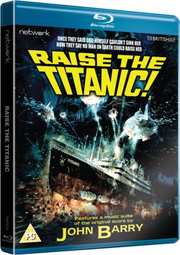






























































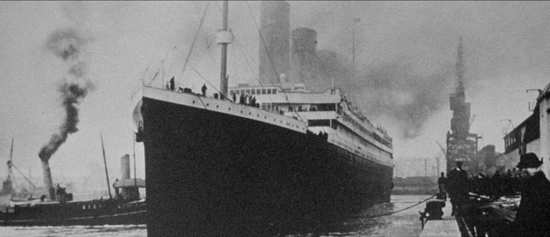

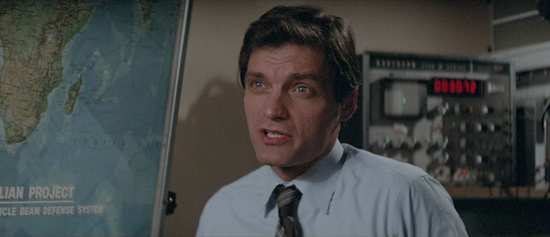


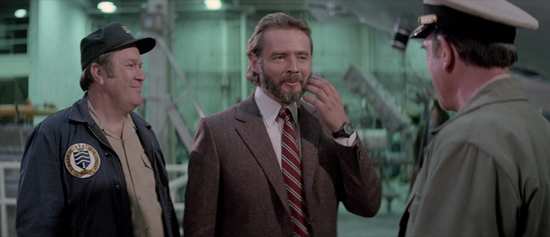
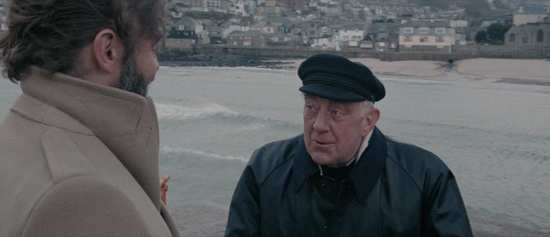
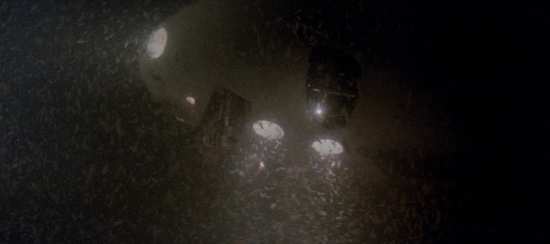

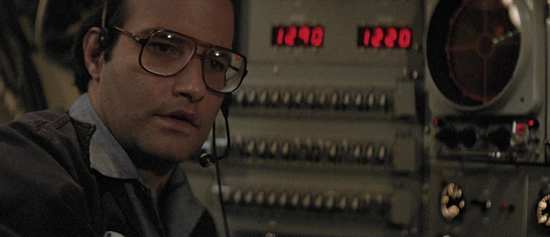

Your Opinions and Comments
Be the first to post a comment!